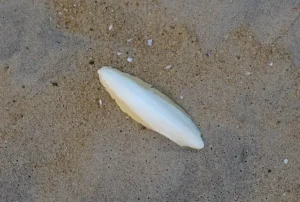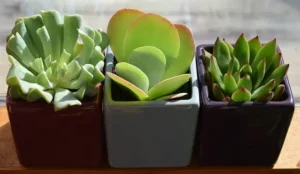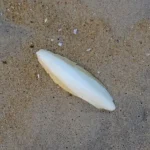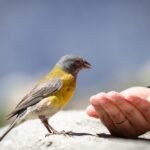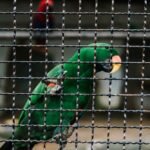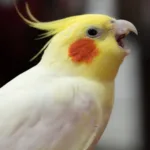Parrots do not slobber. They are quite fastidious creatures that like to keep themselves clean at all times. So this sloppy behavior might seem a little strange coming from your parrot.
Although parrots have salivary glands, they do not produce nearly as much saliva as some of the other animals. As such, it is not normal for them to drool.
Drooling is usually a result of an infection in the oral cavity or GI tract. Canker is one of the most common infections of the crop that may cause lesions inside the mouth. The pain and discomfort from the ulcers prevent parrots from closing their mouths properly causing them to drool.
Quick Navigation
Do Parrots Have Salivary Glands?
Parrots, like mammals, have fully functional salivary glands located in their mouths. They typically use their tongue to collect food by extending it outward from the mouth.
A parrot’s tongue has barbs on the sides that are covered in mucus produced by the salivary gland. The tongue is also much longer than the beak because parrots largely rely on it to pick up their food.
Salivary glands can vary between bird species. Omnivorous birds, like parrots, usually have well-developed salivary glands. On the other hand, birds of prey and other wild birds have less developed salivary glands or don’t have them at all. The amount of amylase, an enzyme involved in digestion, secreted by the salivary glands also varies among bird species.
Drooling vs. Regurgitation
Saliva is just as important for parrots as it is for us humans. It serves the same purpose in parrots. It helps to lubricate the mouth and tongue to make the food easier to swallow. However, the production of saliva in parrots is comparatively less than in other animals.
So, it is not normal for parrots to be dripping saliva from their mouths. Whereas regurgitation is a normal behavior that parrots use to bring up undigested food stored in the crop.
You may have sometimes seen your parrot regurgitate on you, and that may contain some amount of salvia. But it is only a small amount, and the rest of it is the food they have stored in their crop.
Also, when a parrot regurgitates, you can see them purposely trying to gag and throw up the partially digested food. But in the case of drooling, the parrot’s actions are involuntary. It just simply slobbers and lets the liquid flow out.

What Causes Parrots To Drool?
In order to determine the cause of drooling, a clear distinction needs to be made between the liquid that comes out of the parrot’s mouth. If this is a clear liquid, it could be saliva or vomit.
However, in case it appears to be a thick discharge, it could be from a respiratory or crop infection caused by trichomonas or megabacteria. In any case, a visit to an avian vet is in order.
Obstruction In The Crop
If your parrot has something stuck in its mouth that prevents it from swallowing normally, it can lead to drooling. When the parrot is unable to swallow or throw up the object, the saliva will build up at the back until it drips from its mouth.
This problem could be caused by ingesting a foreign object that can not pass through the crop. It could be anything from a household item to a toy inside their cages. Small parrots are more susceptible to such blockages due to their small size.
The stuck object can cause discomfort in the parrot’s mouth and prevent it from fully closing its beak, letting the saliva drip. Anything lodged in its throat can be a serious problem and must be dealt with quickly.
Usually, parrots are quite adept at taking care of their beak and mouth. But it is a good idea that you also check on their beak health from time to time.
Take a look around the mouth using a narrow light to see if there’s any kind of inflammation of the gums or red sores. That could indicate an infection. Any sign of a foreign object should be treated as an emergency.
Signs Of Obstruction In The Crop
- Pacing back and forth
- Reduced appetite
- Weight loss
- Constipation
- Lethargy
- Wheezing
Oral Lesions
According to a study published by Iowa State University, Hypovitaminosis A can cause oral lesions in parrots. It can make activities like swallowing food or vocalizing a lot harder and more painful. The parrot may keep its beak partly open to alleviate the pain which can cause them to drool.
Hypovitaminosis A is a common condition found in parrots that are on an all-seed diet. Vitamin A is important for maintaining healthy skin and mucous membranes. When a parrot does not get enough vitamin A in their diet, their oral and pharyngeal areas can be affected.
In severe cases, the mucous glands in the oral cavity can undergo changes, and cysts made of keratin can form in these glands.
These changes can weaken the protective barrier of the epithelial tissues, making them more vulnerable to invading pathogens or disease-causing agents. That is why parrots deficient in Vitamin A are more susceptible to respiratory or sinus infections, which can also cause the parrot to drool.
How To Check For Oral Lesions In Parrots?
While checking for oral lesions in parrots, it is essential to be gentle. The parrot’s beak might be hurting and wouldn’t want you to hold its beak open. You need to carefully examine the condition of their mouth while also maintaining as light a restraint as possible.
Use a soft towel to gently hold your parrot. Ensure that they do not hurt themselves by flailing in your hands.
Gently and gradually open the beak using your thumb and forefinger. Do not try to force it in any way. If the bird seems to be in pain, it is better to leave it alone. At that point, you would know that something isn’t right and you should make an immediate appointment with an avian veterinarian.
In case your bird does let you open the beak, use a torch, preferably a narrow light source to look for any abnormalities such as redness, swelling, sores, growths, or discoloration in the mouth
Check the choanal slit to see if the discharge is coming from the sinuses or the back of the mouth.
Also take note of any symptoms such as difficulty swallowing, drooling, or changes in eating or vocalization.
Canker
Canker is a type of crop infection that is often seen in budgies and pigeons. The scientific name for canker is “Trichomonas Gallinae.” It is common among birds living in larger aviaries, however, it can happen in captive parrots as well.
Canker is a serious condition that affects the crop and esophagus of the bird. It is characterized by oral plaque lesions that develop on the inside of the mouth, including the gums, tongue, and inner cheeks.
The lesions commonly observed are sticky, creamy white, or cheesy yellow areas of dead tissue. These lesions can be found in the mouth, pharynx, inner nostrils, and esophagus. In some cases, the lesions can spread to the crop, upper respiratory tract, and even the outside of the beak.
This can result in difficulty swallowing (dysphagia), loss of appetite, and sometimes noisy breathing. The infection can also spread throughout the bird’s body, causing similar necrotic spots in the liver, spleen, lung, or gut lining.
Symptoms Of Canker In Parrots
The parasite causes inflammation of the crop lining leading to ulcers inside the mouth. Parrots with canker are often at risk of contracting a secondary bacterial infection soon after. Here are the common symptoms of canker.
- Vomiting (Not regurgitation)
- Weight loss
- Open-mouth breathing
- Dyspnea
How To Prevent Canker In Parrots
Canker can be a fatal disease in parrots if it isn’t treated in time. So it is important to take the necessary steps in preventing it from happening to your bird.

Hygiene
Since the protozoan parasite needs water to survive, canker mainly spreads by the use of the same water or food bowls. You should regularly clean and disinfect water bowls. It is also best to avoid sharing one water bowl between different birds especially if one of them is new as it might be carrying the parasite.
Quarantine
Parrots can be extremely sensitive to the effects of parasites. These can sometimes come from other birds too. Birds that are recently brought home should be quarantined for at least a month before you decide to put them in the same cage with others.
What Should I Do If My Parrot Is Drooling?
Oropharyngeal issues usually don’t have any noticeable symptoms until the condition becomes severe. So it’s crucial to take your parrot to the vet as soon as you notice these signs.
If your parrot is drooling excessively and appears to be sick, you should visit your avian vet immediately. In most cases, drooling indicates problems with digestion, crop, or the respiratory system.
In case you suspect the issue may be inside the parrot’s mouth, you should examine it using a penlight. Use a hand towel to provide gentle restraint, making sure not to hurt them or hold them around the body tightly.
Take a good look inside the mouth for any signs of mucus, redness, unusual masses, or anything else that seems like a sore or ulceration.
Identifying the issue yourself can speed up the diagnosis and help in treating the bird better. The parrot will still require further veterinary attention so it’s important you explain the situation to your avian vet.

